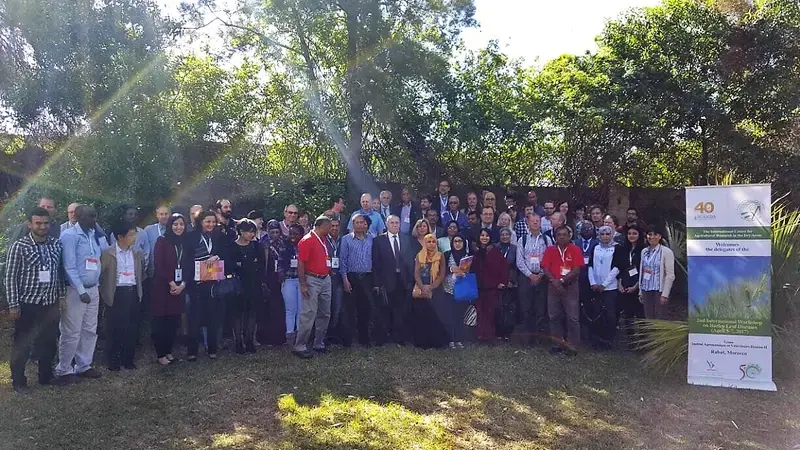Focus on barley as a climate change crop

Finding practical and sustainable solutions to combat the threat of barley leaf diseases was the focus of the Second International Workshop on Barley Leaf Diseases organized by ICARDA and partners in Rabat, Morocco in early April.
The three-day event was part of ICARDA’s efforts to raise the productivity of barley – a crucial dryland crop which thrives under most marginal ecosystems and sustains rural communities facing drought, land degradation and impacts of climate change.
More than 60 delegates from 20 countries discussed issues of genetics, evaluation and breeding for resistance to barley leaf diseases, epidemiology and integrated disease management, and molecular science-specific topics linked to host-pathogen interactions.
Barley is a major cereal grain grown on more than 49 million ha globally, ranking fourth after maize, rice and wheat. Known as the ‘climate change crop’ for its ability to grow in the harshest of environments, barley requires little labor and inputs, generates stable yields, and is an important source of food, forage and livestock feed in many developing countries.
However, yields can be devastated by barley leaf diseases. “In North Africa, barley leaf diseases cause serious economic losses,” says Dr. Ramesh Verma, ICARDA Barley Breeder. “To reduce these losses and guarantee high-quality barley production, we promote integrated disease management concepts and develop disease-resistant crop varieties.”
ICARDA genebanks play a crucial role in breeding high-yielding and disease-resistant barley varieties that are also tolerant to drought, salinity, and extreme high and low temperatures, according to Mr. Aly Abousabaa, ICARDA’s Director General. “ICARDA has a global mandate for the improvement of barley, and our genebanks not only conserve seeds for tomorrow, but also provide germplasm for the breeding programs of today,” he said.
In Morocco, about 2.2 million ha of land is allocated to barley, yielding an average production of 2.6 million tons yearly. In 2016, which was a very dry season, the production was only 700,000 tons. Almost 30% of reported yield losses were caused by net blotch, a common barley leaf disease across the North Africa region.
When leaf diseases are severe, they can cause significant reductions in grain yield and quality, leading to a downgrading of grain from malting quality to feed. Diseases can effectively be managed by using a combination of varietal selection, crop rotation and fungicides. In 2016, two naked barley varieties were released by INRA Morocco. Naked barley is a variety with an easy-to-remove hull.

“The Green Morocco Plan, in collaboration with ICARDA, is prioritizing research on barley crop by putting incentives for certified seeds production and use by farmers,” said Prof. Mohammed Badraoui.
Barley is one of the oldest consumed grains in the world. It was a staple grain for centuries and is included in the diets of many African and Middle Eastern countries that have been consuming barley for thousands of years. Barley provides a range of important vitamins and minerals: fiber, selenium, beta glucan, vitamins, iron and zinc, with many other nutritional attributes. When compared to other grains, barley is lower in fat and calories, but higher in dietary fiber and minerals.
